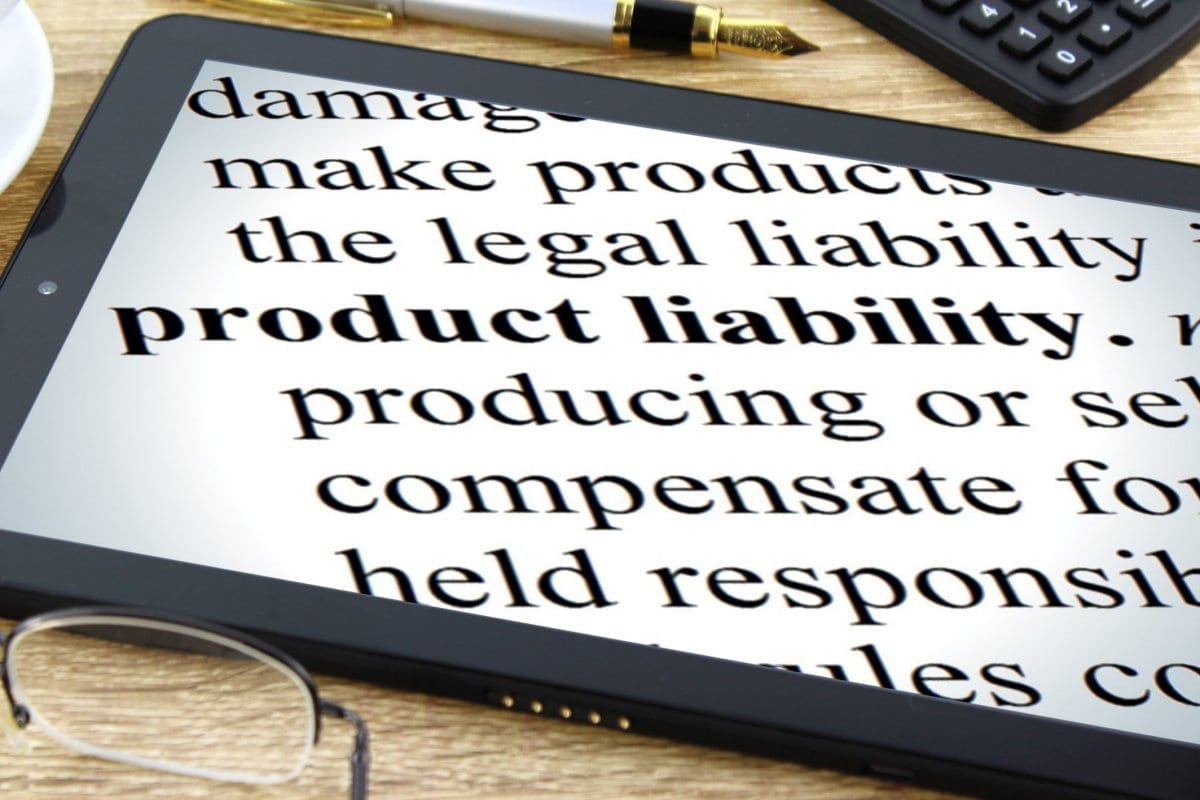Defective or dangerous products can have devastating consequences for you or your loved ones. Moving forward can be difficult or even impossible without financial restitution.
Product liability refers to the legal liability manufacturers and commercial traders incur for producing or selling dangerously faulty consumer goods. Product liability can be one of the most complicated sectors of personal injury law.
If a faulty product has injured you, understanding your rights is critical. Reviewing some commonly asked questions can help.
What Is a Product Liability Claim?
Product liability claims are legal claims against negligent manufacturers and distributors of faulty consumer goods. Product liability claims are brought when products fail to function reasonably safely, leaving consumers injured.
Common product liability claims involve the following items:
- Vehicles and vehicle parts
- Children’s toys and clothing
- Medical devices
- Household appliances
- Tools
- Workplace equipment
- Pharmaceuticals
This list is not exhaustive. Product liability claims can include virtually any products sold for public consumption.
What Are the Three Types of Product Defects?
Consumers assume that the products they use have been carefully designed, tested, and labeled to ensure safety. All too often, however, products can cause harm.
To bring a successful product liability case, you must demonstrate one of these three categories of defect applies.
- The product is based on an unsafe design.
- The product was rendered faulty during the manufacturing process.
- The product lacks necessary instructions and warnings.
Design Defects
Design defects refer to products that unreasonably endanger the user even when they are manufactured correctly and include the necessary instructions and warnings. However, inherently dangerous products, like power tools, are not necessarily considered defective by design.
Products like power tools are important; reasonable consumers recognize their inherent danger and take the necessary precautions. This means that, to bring a successful product liability claim regarding a design defect, you must be able to show that the product was unsafe by design and that all the following apply:
- A less dangerous design could have been employed.
- A less dangerous design could have reasonably been implemented from a technological and financial standpoint.
- Using a less dangerous design would have preserved most of the product’s usefulness and reduced the risk of harm.
Additionally, you must prove that the injuries you sustained were the direct result of the design defect (and not something else).
Consider these common dangerous design examples:
- A toy designed for young children incorporating small removable parts that can serve as choking hazards
- A gun safety mechanism that allows it to be fired even when the safety is employed
- A car feature that allows it to accelerate suddenly and of its own accord
Manufacturing Defects
When errors or problems arise in the manufacturing process, it can render a normally safe product dangerous. Further, when products are modified somewhere along the supply chain, it can prove exceptionally risky.
Manufacturing defects can be some of the most difficult to prove because they can be random and may not affect every item in the product line. You must provide clear evidence of the product’s defect, which can be especially difficult to accomplish if the product is ultimately damaged or destroyed because of the manufacturing defect.
Consider these common manufacturing defects:
- A tread separates from a tire.
- A faulty handle breaks off a child’s car seat or carrier.
- A car’s safety mechanism fails to engage.
Marketing Defects
When a product lacks the necessary warning or instructions for its safe use, it can put users at considerable risk. Here are several examples of marketing defects:
- The consumer is not advised of product risks that are neither predictable nor obvious to reasonable people.
- The consumer is not supplied with the instructions necessary for safely using the product.
- The instructions or labeling included factually misrepresent the product in a manner that leads to the user being injured.
When the labeling and design of a product comply with federal regulations, there is a presumption that the manufacturer lacks liability in the matter. However, this presumption can be challenged.
Manufacturers can be held liable if the regulations themselves are identified as inadequate or if the manufacturer withheld critical information about the product’s safety that affected its approval under federal guidelines or its ability to remain within all necessary regulations.
Consider these examples of failure to warn:
- A child’s high chair that is complicated to lock safely into place
- A tool that is exceptionally dangerous when the user’s hand is in the wrong place
- A drug that is exceptionally dangerous when used in combination with other common drugs
How Long Do I Have to File a Lawsuit?
If someone else’s negligence leaves you injured by a consumer good, there is a deadline for filing a lawsuit against the at-fault party. This is known as the statute of limitations. In Texas, consumers have two years from the date of their injuries to file suit.
There is also a statute of repose, a window of time based on the product’s original sale date. In Texas, this is 15 years. However, if the manufacturer or seller guaranteed the product for a longer period, that extended period applies.
There are also exceptions for cases in which the injured party didn’t encounter the product within the statute of repose or the product caused the consumer to develop an illness that didn’t present symptoms until long after the fact.
In other words, the statute of limitations applies to your unique case, and the statute of repose applies to all claims related to a specific product. If you have been injured by a faulty consumer good, acting quickly is imperative.
What Are the Most Common Defective Vehicle Claims?
Many product liability claims involve vehicles. Consider these examples:
- Seatbelts that don’t operate correctly
- Defective airbags
- Defective tires
- SUVs that roll over
- Roof failures
- Defective child car seats
- Seatback failures
- Defective door latches
- Gas tank ruptures and explosions
Cars are complicated machines, and each part can involve several manufacturers and designers. If a vehicle’s defective part injures someone, multiple parties can potentially be held legally accountable:
- The car manufacturer
- The manufacturer of the part
- The company that assembles or installs the part
- The wholesale company that sold the part or vehicle
- The retail store that sold the vehicle or part
What Damages Can I Seek?
If you have been harmed by a faulty consumer good, obtaining the compensation you deserve is critical to fully recovering. The legal damages (or losses) you can seek in your product liability claim are divided into economic and non-economic losses.
Medical Bills
Medical bills are economic damages, or a loss you can put a value on. If your injuries are serious, this category of expense can be ongoing. Such injuries can lead to secondary health concerns that require future medical care and treatment. Consider these common examples of medical costs:
- Emergency treatment at the scene of the accident and emergency transportation to the medical facility
- Surgical care and medical follow-up
- Hospital stays
- Medical procedures, tests, treatment, care, and guidance
- Pain management techniques
- Prescription medications
- Physical and occupational therapy
- Adaptive physical devices and adaptations to home and vehicle
- Home health care
Lost Earnings on the Job
While you recover from your physical injuries, you’ll probably be off the job, which typically means a decrease in pay or a loss of income.
If you can’t return to work for a considerable amount of time or your ability to do your job is affected, the loss can be even more substantial. While this is clearly an economic loss, the meaning we derive from our careers can also cause emotional setbacks.
Pain and Suffering

The pain and suffering associated with being injured by a consumer product can be overwhelming. In addition to the physical pain caused by your injuries, there is emotional scarring to consider.
Pain and suffering are classified as non-economic damages. While these are more challenging to assign a value to, they can be debilitating and should not be overlooked in your claim.
Do I Need a Lawyer?
Working with an experienced product liability lawyer is in your best interest. Personal injury claims involving faulty consumer goods are especially complicated in terms of both the legalities (including identifying the liable parties) and the technology involved.
Your best chance of recovering depends on obtaining compensation that covers your complete damages, which makes working closely with a skilled product liability lawyer paramount.
What If the Insurance Company Offers to Settle?
Beware of insurance companies that extend early settlement offers. Often, such offerings are an attempt to finalize claims before claimants recognize the full extent of their physical, financial, and emotional damages.
Before you accept a settlement offer from the insurance company, consult with an experienced product liability lawyer who understands the details of your claim.
Consulting with an Experienced Killeen Product Liability Lawyer
Defective or dangerous products can have devastating consequences for you or your loved ones. Moving forward can be difficult or even impossible without financial restitution.
If you’ve been affected by a defective product, you should seek the help of a liability attorney right away. He or she can help you find answers to your legal questions and get the restitution you need to move forward.


Join the conversation!